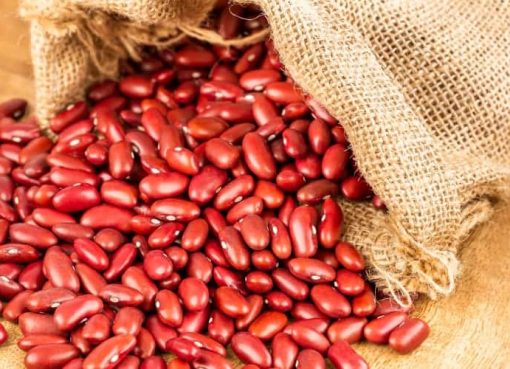The Kenya Plant Health Inspectorate Service (KEPHIS) is working with over 200 horticultural produce exporters to the European Union (EU) and Australian markets to formulate strategies to curb False Codling Moth (Thaumatotibia leucotreta) pest which has led to rejection of the country’s products at international markets.
The Inspectorate’s Managing Director((MD), Dr. Esther Kimani says the False Codling Moth (FCM) is classified by the EU as a ‘quarantine pest’, meaning farms invaded by the pest are never allowed to sell their agricultural produce to the lucrative market.
“This is a major pest, because the larvae of the moth feed on a wide range of crops such as rose flowers, peppers, cotton, capsicum, macadamia nuts and citrus. The brown insect originated from Sub-Saharan Africa, but has also been detected in Europe and the US. It thrives under warm and humid conditions and can produce up to five generations annually. Although it has been around, FCM in now classified as an emerging pest because it is affecting chilli export from Kenya. The pest has also shifted to rose flowers causing major losses to growers” states Dr. Kimani.
Kenya is among the largest exporters of roses in the world accounting for 38 per cent market share of the EU market which includes Netherlands, France, Germany, and Norway. From the total horticultural export in 2018, cut flower earnings grew to 73 per cent from 71 per cent in 2017.
According to Horticultural Crops Development Authority (HCDA) last year reports, 29 fresh produce (including chilli) export interceptions affected by the moth were made by the EU market while between April 2016 and May 2017, Kenya’s exports suffered a total of 46 such interceptions.
“KEPHIS has formulated action points for the Australian market and these include registration of farms accredited to Australia, consolidators to provide a list of the farms they source from and provide a detailed report for each farm.We have also come up with a compliance datasheet to be filled and signed by exporters committing themselves that cut flowers delivered at JKIA for exit inspection meet the threshold of the Standards and Market Access Programme, which is implemented jointly by United Nations Industrial Development Organization, Kenya Plant Health Inspectorate Services (Kephis), and Kenya Bureau of Standards, among other stakeholders” states the Kephis head.
She says data will be developed to capture the number of consignments inspected and pests detected as a way of preserving Kenya’s international markets quota.
Crop protection experts say that over the last two years, the pest incidence has increased due to the changing weather patterns. It is now infesting feeds more than 100 host plants, flowers, vegetables, fruit trees, field crops and other plants.
Different studies and trials conducted in the country by KEPHIS and its research partners have shown that False Codling Moth is widespread across the country with Kirinyaga, Murang’a, parts of Kiambu and Nakuru, Machakos and Kajiado counties recording high prevalence rates.
Demand by market to reduce pesticide use on cut flowers leaves growers with limited options for moth control.
The moth has been observed to cause damage on the flower bud where the larva enters into the bud causing extensive damage.
The most challenging bit with FCM is that most of the time the farmer does not know whether the pest is present in the greenhouse.
“They are most active during the night and once the larvae enter the fruit, they are difficult to detect. Due to the fact that the eggs are very small and difficult to detect by visual inspection of the crop, use of monitoring tools is key to early d etection of the pest,” says Dr. Kimani.
Kenya Biologics has been helping growers make out detection of the pest through use of a new technology dubbed CRYTRACK.
This product whose strategy enables to determine the presence of FCM and also manage pest population by holding captive male FCM through continued mass trapping, has been noted to reduce the pest by over 70% in chillies.
The pest can also be controlled biologically by using a new and uniquely formulated insecticide that multiplies bacteria on the False Coding Moth body thus eliminating it.
Another method is the use of the sterile insect technique (SIT). This involves releasing large numbers of sterile males into the land and on mating with females there would be no offspring.
Although effective in controlling small populations, SIT is ineffective against large, dense populations.
Signs of the disease are brown spots on the affected fruit, dark brown residue from the larvae and molds. Premature ripening and dropping of fruits also occur with infestations. However, infestations can be difficult to detect in peaches when fruit is still firm and on the tree. This poses a threat to industry because potentially infested fruit could be sold without prior knowledge of its presence.
Growing international trade and tourism has increased the risk of introduction of this pest. According to the International Centre for Insect Physiology and Ecology (ICIPE) False Codling Moth can survive in climates described as tropical, dry or temperate. It is estimated that approximately 50 percent of the global environment may be suitable habitat for FCM.
“Do not export fresh produce unless KEPHIS or other government inspectors have cleared them first if you have any doubts. Never remove fresh produce from your farm if your area is under False Codling Moth quarantine,” warns Dr. Kimani.
To maintain Kenya’s International horticultural produce markets the Kephis MD urges all farmers to cooperate with all quarantine restrictions or rules that might be imposed and allow authorized KEPHIS or other government inspectors access to their farms to install and inspect insect-monitoring traps.
By Anne Mwale




